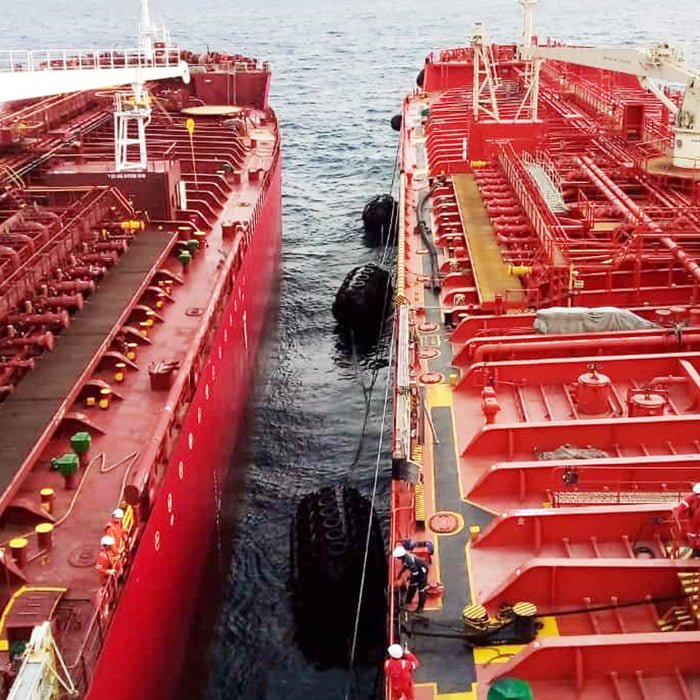Top 10 FAQs About Pneumatic Rubber Fenders
05/29/2025The Role of Pneumatic Rubber Fenders in Naval Operations
05/30/2025What Affects the Performance of Pneumatic rubber Fenders?
Pneumatic rubber fenders—also known as Yokohama fenders—are essential for safeguarding ships and port infrastructure during berthing. Their performance hinges on several critical factors that ensure safety, durability, and efficiency.

Why Understanding Fender Performance Matters
Imagine a large cargo ship docking at a busy port. Without properly functioning marine fenders, the vessel risks damaging both its hull and the dock, leading to costly repairs and operational delays. Pneumatic rubber fenders act as a cushion, absorbing the kinetic energy during berthing and preventing such mishaps. Understanding what affects their performance is crucial for ship operators, port authorities, and marine engineers to ensure smooth and safe docking operations.
1. Vessel Specifications and Berthing Conditions
The size, type, and berthing behavior of vessels significantly influence fender design. Larger ships exert more force upon docking, necessitating fenders with higher energy absorption capacities. Additionally, the angle at which a ship approaches the dock and environmental factors like wind and current can affect the pneumatic fender’s performance.
2. Environmental and Operational Factors
Environmental conditions such as wind, waves, and water levels can impact pneumatic fender performance. For instance, high tides may require fenders that can accommodate greater vertical movement, while strong currents might necessitate pneumatic fenders with enhanced stability. Operational factors, including the frequency of berthing and the speed at which vessels dock, also play a role in determining the appropriate fender specifications.
3. Manufacturing Quality and Material Standards
The quality of materials and manufacturing processes directly affects the durability and performance of pneumatic fenders. Fenders constructed with high-quality rubber and reinforced with strong tire-cord layers offer better resistance to pressure and cutting. Compliance with international standards like ISO 17357 ensures that pneumatic fenders meet specific performance criteria, providing reliability during operations.
4. Maintenance and Inspection Practices
Regular maintenance and inspections are vital to ensure the longevity and effectiveness of marine fenders. Over time, pneumatic fenders can experience wear and tear due to environmental exposure and repeated use. Implementing a maintenance schedule that includes checking for air pressure consistency, inspecting for surface damage, and ensuring proper anchoring can prevent unexpected failures and extend the service life of the pneumatic fenders.
5. Correct Pneumatic Fender Selection and Installation
Selecting the appropriate type and size of fender is crucial for optimal performance. Factors such as the vessel’s size, docking frequency, and specific berthing conditions should guide the choice of fender. Proper installation, including correct positioning and secure attachment, ensures that the pneumatic rubber fender functions as intended, providing maximum protection during docking operations.
People Also Ask
What are the benefits of pneumatic rubber fenders over traditional fenders?
Pneumatic rubber fenders offer superior energy absorption, adaptability to various berthing conditions, and reduced reaction forces on vessel hulls, making them ideal for large ships and sensitive docking operations.
How often should marine fenders be inspected?
It’s recommended to inspect marine fenders regularly, with the frequency depending on usage intensity and environmental conditions. Routine checks help identify wear and prevent potential failures.
Can pneumatic fenders be used in all types of ports?
While pneumatic fenders are versatile, their suitability depends on specific port conditions, vessel types, and operational requirements. Consulting with marine fender experts can help determine the best fit for a particular application.
Understanding the factors that affect the performance of pneumatic rubber fenders is essential for ensuring safe and efficient docking operations. By considering vessel specifications, environmental conditions, manufacturing quality, maintenance practices, and proper selection and installation, stakeholders can optimize fender performance and protect valuable maritime assets.
